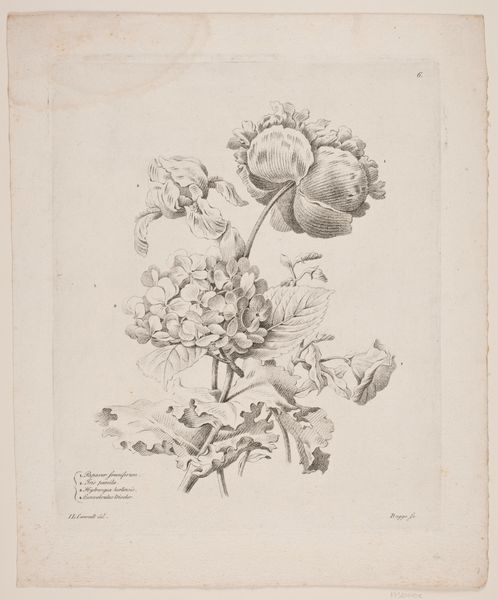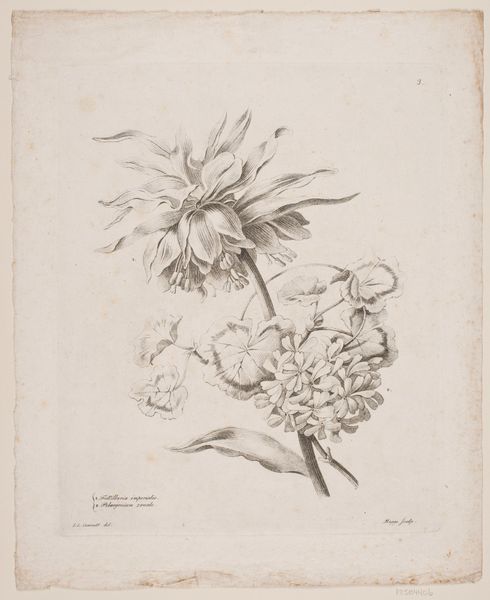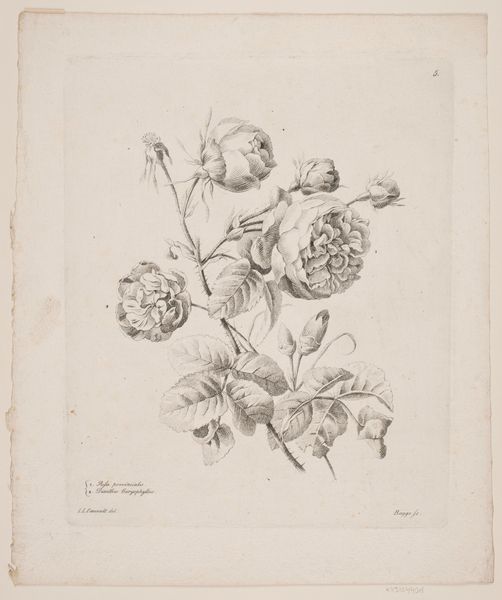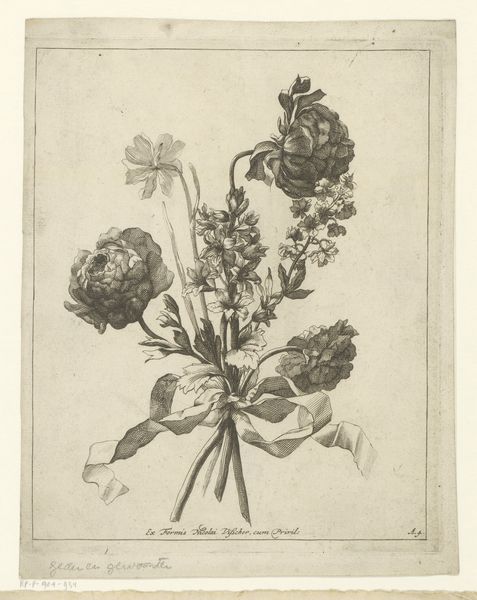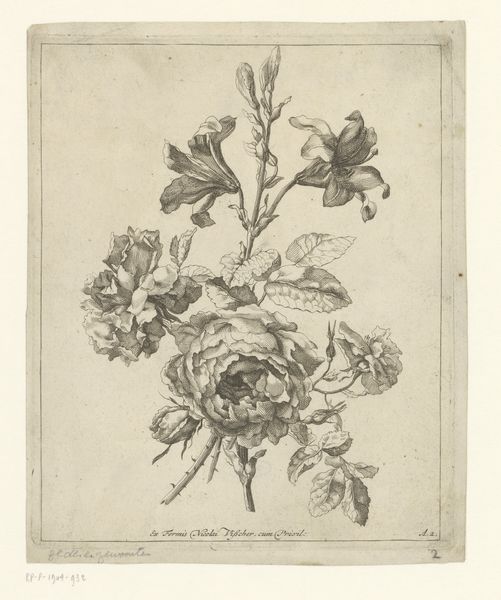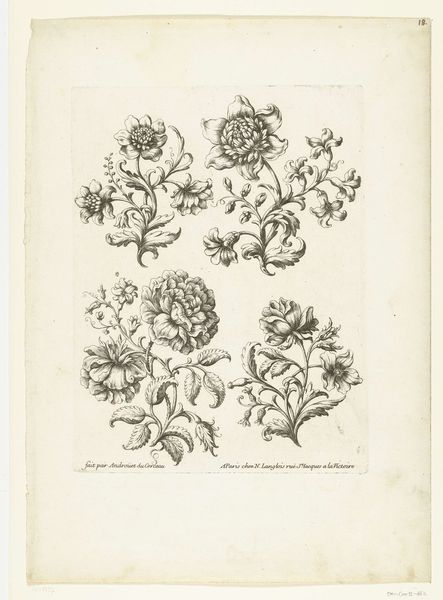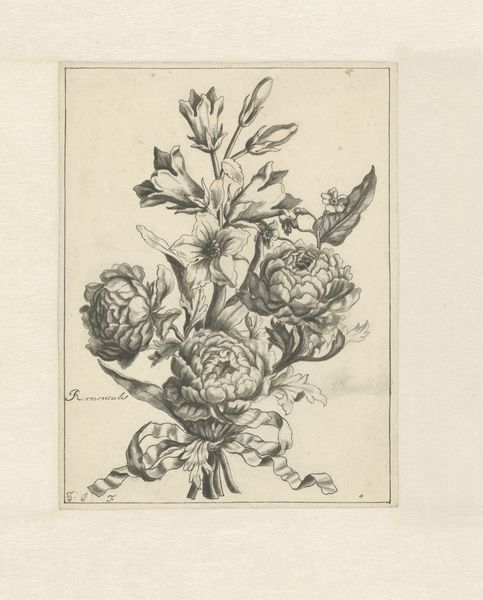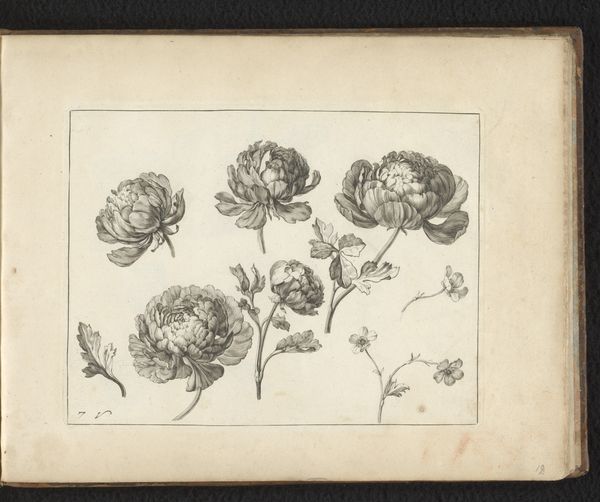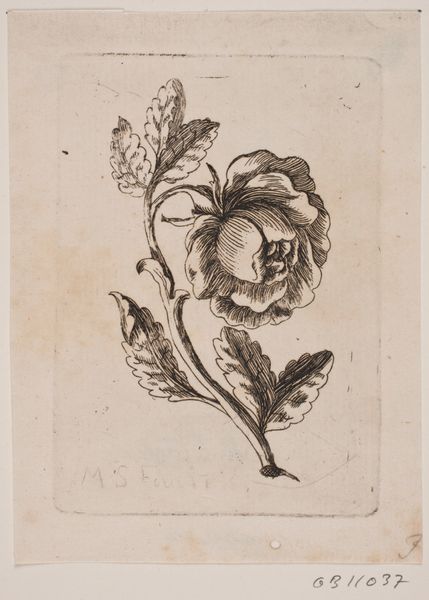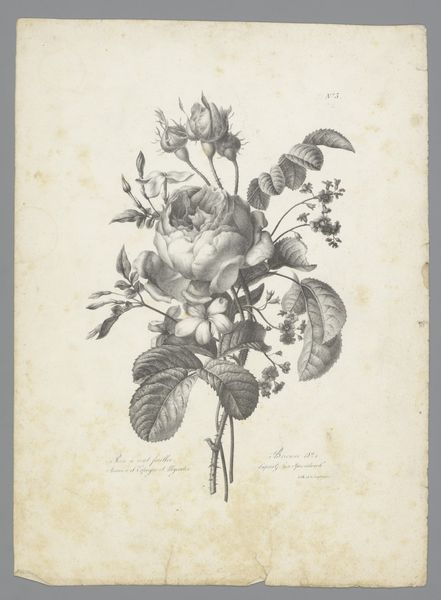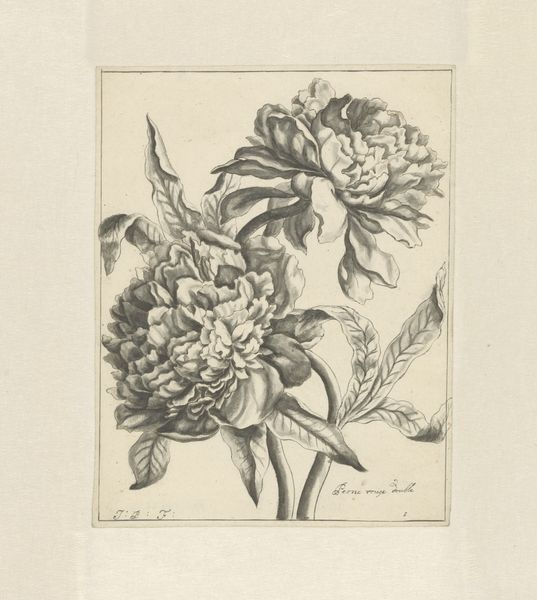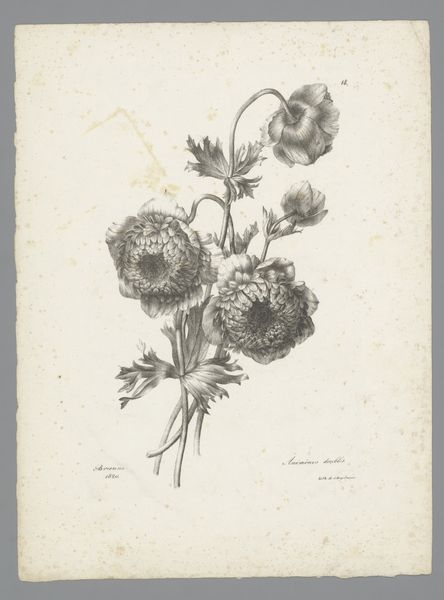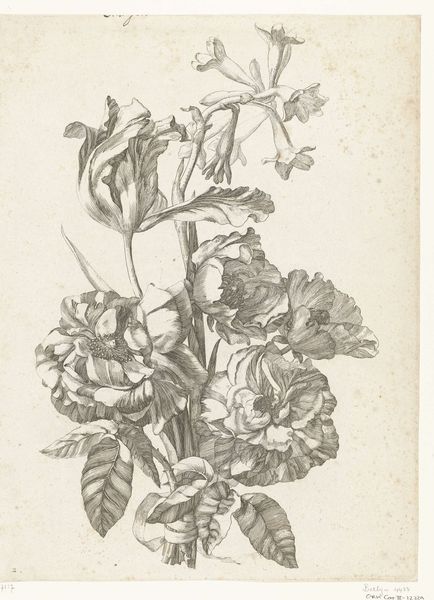
drawing, print, etching, paper
#
drawing
# print
#
etching
#
classical-realism
#
etching
#
paper
Dimensions: 291 mm (height) x 238 mm (width) (plademaal)
Curator: It's lovely, isn’t it? This is "Blomster," which translates to flowers, created in 1816 by Oluf Olufsen Bagge. It’s an etching, currently held here at the SMK, the Statens Museum for Kunst. Editor: My first impression is of something delicate, almost ghostly. The stark contrast between the dark lines and the off-white paper gives it a very restrained, elegant feel. Curator: Restrained is a good word. Bagge was working within the prevailing Neoclassical aesthetic, so you see this focus on precise linework and controlled composition. Consider the etching technique; the artist painstakingly scratched lines into a metal plate, allowing for a very controlled transfer of ink to paper. It's labor-intensive. Editor: Absolutely. And that process, that labor, would have been deeply understood and valued by the audiences of the time. Etchings like this, along with other printed materials, played a key role in disseminating botanical knowledge and artistic taste to a broader public. Curator: Yes, dissemination of knowledge was definitely a function of the format and printmaking generally. Notice also the Latin names for each of the flowers written in the lower corner. In terms of materials, the paper itself also speaks volumes—likely a high-quality laid paper that would have contributed to the overall cost and perceived value of the print. Editor: The formal rendering and dissemination also reflect a wider cultural fascination with natural sciences blooming throughout Europe in this period, partly through public display via prints and drawings like this. The etching allows people to closely observe plants not native to Denmark, broadening understanding of ecology and botany for cultural and national gain. Curator: Exactly. And the scale—it’s not particularly large—makes it feel almost like a specimen meant for close study, connecting artistic pleasure to scientific examination and perhaps social status as well. Editor: On reflection, I notice, too, that although this print displays a bouquet, in its historical context it probably served much the same public functions and performed much the same kind of aesthetic and even ideological work as a painting. Curator: Indeed. Thinking about it this way allows us to challenge traditional hierarchies between fine art and what might be seen as merely craft or illustration. Editor: Precisely! It's far more integrated into public discourse than the aesthetic beauty initially lets on. Curator: Thank you.
Comments
No comments
Be the first to comment and join the conversation on the ultimate creative platform.
